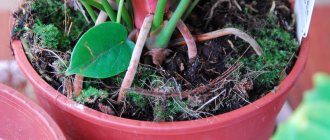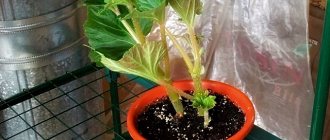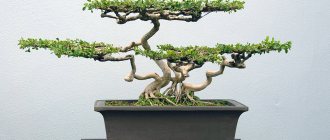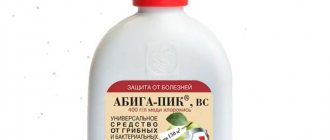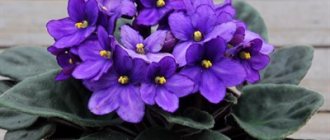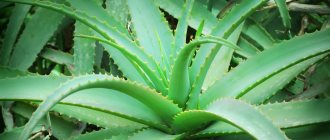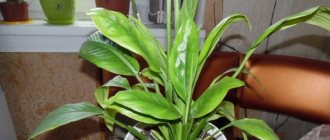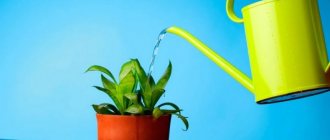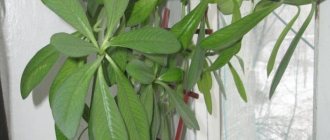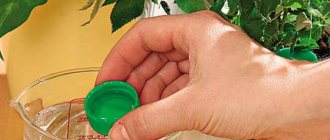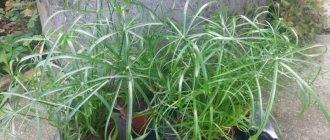Agree, nowadays it is very easy to grow seedlings or flowers on windowsills. I came to the store, chose bowls, seeds, bought soil, fertilizers, drainage. Everything is ready, all that remains is to plant the plants.
Indeed, manufacturers have made the life of flower growers and summer residents incredibly easier, but at the same time they have added a lot of hassle. What seeds to buy, how to choose containers, how does one fertilizer differ from another? There are a lot of questions.
Let's look at one of them: how to choose good soil.
Sandy
Low levels of fertility are considered a hallmark of sandstone. Since this is a quartz mineral, its texture is free-flowing and quite loose. The composition may contain up to 95% sand and only 5% clay. With such a high sand component, the soil, saturated with moisture, does not form into a solid lump, but crumbles bit by bit.
The advantages of the soil include:
- no formation of large lumps, which eliminates processing difficulties.
- good moisture and thermal conductivity obtained due to the flowability and looseness of the earth.
- aeration, which sufficiently saturates the soil with oxygen.
Among the shortcomings are:
- lack of any nutritional elements. The situation can be corrected by using fertilizers, but since the soil needs frequent watering, the resulting useful components are simply washed away.
- jumps in temperature. Rapid heating of the soil is an advantage, but after daylight hours are over, the same rapid cooling occurs, which has a detrimental effect on growing crops.
- high throughput level. This ability leads to increased drying, in which the roots do not receive sufficient saturation with moisture due to its deep settling in the clay.
What plants can be planted in sandstone?
The following can take root well and bear fruit in the soil:
— pyramidal fir trees and coniferous thujas.
- flower beds of carnations, calendula, aster and cornflowers.
- shrubs of barberry, jasmine, juniper and hawthorn.
- legumes and melons, onions and carrots.
- fruit trees, currants, strawberries and gooseberries, but only with sufficient improvement of the soil.
- beets, potatoes and cabbage with frequent fertilizing, mulching and abundant watering can bear fruit, but in moderation.
Sod land
The result of overheating of turf layers is quite nutritious soil. To prepare the substrate, you need to put the grass in a pile, then cover it with a layer of cow manure. All that’s left to do is wait until this “pie” gets overcooked. The substrate is used for planting plants that prefer acidic soils, since turf soil has an acidity of 5 to 6 pH. In order to reduce the reaction, as well as to give the substrate a looser structure, turf soil is often mixed with other types of soil, as well as sand or clay.
Sandy loam
In terms of mechanical composition, this soil variety is light and has significant similarities with sandy soil. We can distinguish sand even visually, and the formed soil ball is deformed with slight pressure.
Composition of sandy loam soil:
- the clay component accounts for only 20-40%
— the remaining 60-80% is sand
- has a variety of minerals, including quartz
Positive qualities characterizing sandy loam soil:
- has a positive effect on plant development due to the rapid decomposition of organic soil components.
- When dry, cracks and crusts do not appear on the surface of the earth.
- lends itself well to aeration and warms up quickly.
- the root system is rarely affected by rot, since there is no stagnation of water.
- It is lightweight and easy to process.
- allows you to retain nutritional components at the roots for a long time.
- at low temperatures, the soil can remain warm for a long period.
- has a high level of moisture absorption and oxygen saturation.
- saturates the root system with a sufficient amount of moisture due to the slow passage of water through the soil.
- there is no tendency to form earthen lumps.
The negative aspects of the soil include:
- nutrients go into the clay layer during watering and during rain, which leads to insufficient nutrition of the root system.
- not strong enough structure. Humus components in the surface layer, even with a slight wind, are easily dispersed after drying.
- the lightness of the soil in the upper layer does not retain the mineral component of the fertilizer well.
What plants can be planted in sandy loam
1. Coniferous trees and shrubs - European larch, pine, cypress, spruce, fir, bush juniper mostly grow without loss.
2. Fruit tree can also be planted in this soil. The recommended variety with high yield is Japanese quince.
3. Vegetables and herbs - tomatoes, celery, all varieties of cabbage, cucumbers, cilantro, dill and parsley. But planting plants in the ground should be done a little deeper.
4. Handicraft and decorative flowers – white svida, barberry, bush dosiphora, hawthorn, gorse. Suitable annual flowers include sweet peas, wolf bean, iris, garden purslane, decorative beans, small-flowered marigolds, double-pinnate cosmos, calendula, capuchin. The following perennial plants can be planted in sandy loam soil: thyme, cornflowers, chives, herbal cloves, sage, cut grass, chamomile aster, tansy, and ornamental grasses.
5. Grapes of Rkatsiteli, Alepo and Pino varieties.
Leaf ground
Perhaps the lightest and loosest soil for plants. The mixture of substrate, which contains leaf soil, perfectly allows water and air to pass to the root system, but its nutritional value is at an average level, since such planting material is obtained as a result of the rotting of simple leaves from deciduous trees. They are harvested in small heaps in the fall and left for a period of one to two years. To make the process of overheating go faster, the layers of the heap must be constantly watered and turned over. Leaf soil can be used to enhance the acid reaction.
Chernozem
Chernozem soil is characterized by increased fertility and the content of unique substances that cannot be recreated by artificially mixing components. The earth is formed under natural conditions, has a pronounced black color (due to which it got its name), and its composition contains the following elements:
- magnesium within 20%.
- no more than 15% humic acid.
- humus within 20-25%.
- up to 65% calcium.
— iron, sulfur, and other substances are present in small quantities.
The beneficial properties of fertile soil include:
- no restrictions. Any shrubs, trees, fruits and vegetables are suitable for planting in the soil.
- easy to use. There is no need for preliminary preparation of the land. After the soil for the plants , you can immediately distribute it throughout the site.
- good compatibility with other soil varieties.
- neutral acidity level (pH).
- accelerates the development and growth of the plant due to good saturation of the soil with air and retention of moisture in it.
Despite the fact that the soil seems ideal, it also has some disadvantages :
- diseases and weeds.
- limited effect of beneficial properties. Over time, the old soil is mixed with black soil, and the process occurs regardless of the quality of the latter.
- difficulties in processing.
- limitation in use. It is not recommended to use chernozem soil for planting seedlings and flowers. The soil is highly dense, making it difficult for young roots to break through it.
- long-term moisture retention. For a long period of time, moisture remains in the upper layers and nourishes the plants, so frequent watering is not recommended to avoid the appearance of fungal diseases and rotting.
What can be grown in black soil?
Soil is considered the best option for planting and growing trees and shrubs, flowers, indoor plants, fruits, vegetables, legumes, nightshades and cereals. Chernozem also serves as the basis for the future lawn and is used to dilute soil with insufficient drainage properties, providing plants with the necessary water-air conditions. And if there is a significant content of clay or chernozem in the soil, the area is cultivated. If you need soil delivery, you can contact us here https://gruntoff.ru/grunt-s-dostavkoj.
Coniferous land
This variety of acidic light soil is perfect for growing flowering indoor plants, such as azaleas and anthuriums. The soil is the top layer of litter taken from a coniferous forest (usually pine). If you decide to prepare soil for plants yourself, then you should know that you do not need to remove the layer from the very top, since there are many unrotted needles there. It is best to use the bottom layer, which is located at a depth of 20 centimeters. This is a fairly loose soil with a reaction of 4 to 5 pH.
Swampy (peaty)
Peat soil is a complex variety and is not found often. Compared to other soils, when it dries out, its surface cracks into layers, and when it is abundantly saturated with moisture, peat soil becomes like swampy slurry.
It has a reddish-brown color and feels heavy and dense when rolled into a ball. It is also worth noting that peat soil is often used for indoor plants in combination with other components.
Organic matter and humic acids are the basis for swampy soil, but in addition to this, it also contains:
- oxygen and iron.
- magnesium and sulfur.
- nitrogen.
- potassium and phosphorus.
Depending on the type of peat (high-moor, low-lying and transitional), its components may vary slightly.
Advantages of using marshy soil:
- provides the substrate with air tightness, porosity and water resistance, which has a beneficial effect on the functioning of the root system.
- with the right type of peat, the low level of acidity of the substrate is normalized.
- increases the fertility of the land by increasing the humus content and improving the composition of the soil.
- Provides rapid heating of the soil.
- prevents the leaching and retention of useful elements.
- has antiseptic properties that help in the fight against bacteria, fungus and pathogenic microflora.
- increases soil moisture capacity.
Disadvantages of swampy soil:
- With a loose structure and highly fertile soil, peat does not have a beneficial effect, since trace elements are contained in minimal quantities and their absorption occurs by no more than 5%.
- in combination with low-quality fertilizers and improper application, the soil can lead not only to slow growth, but also to the death of the plant.
- peat increases the level of acidity in the soil, which also adversely affects plant growth.
What is best for planting in peat soil?
Growing garden strawberries, currants and gooseberries in soil is possible without careful processing and the application of any organic and mineral fertilizers. To get a harvest from vegetable crops, you need to carry out a cultivation procedure.
If you plan to plant trees, then you need to take into account that due to the close groundwater in the upper layers of the soil, it is better not to use it, in order to avoid damage to the root system.
Compositions of ready-made soils
The variety of soils on store shelves is amazing - dozens of manufacturers and trade names. How not to get confused and choose the right soil? First, carefully examine the packaging.
First of all, pay attention to the name of the soil mixture. Many of them directly indicate what this or that soil is suitable for - “For seedlings”, “For lemons”, “For ficuses”, “For orchids”. Often there are “Universal” soils, which, according to the manufacturer, should be suitable for planting any plant.
Beginner gardeners, when choosing soil, usually limit themselves to the name. Those who are more experienced carefully read the composition of the substrate.
Most often, the basis of all purchased soils is peat (in the vast majority of cases - highland, much less often - lowland).
Pure peat is rare; usually various additives are mixed into the base: vermicompost (a mixture of sawdust, peat, litter or manure processed by earthworms), sand, vermiculite, dolomite filler, a complex of mineral fertilizers, tree bark, coal and even lake sapropel (bottom sediments freshwater bodies). These additives enrich the soil and loosen it, increasing fertility.
It would seem that it could be easier: you come to the store, choose the soil you like and wait for excellent harvests. However, not all so simple.
Clayey
Clay mail contains 20% sand and 80% ordinary clay, and its color is red or brownish. If the sausage formed from wet soil does not crumble during the process and there are no cracks on it, then we can say with confidence that the soil is clayey.
Advantages of this soil:
- ability to retain water for a long period.
- Compared to other soil varieties, it has a high level of enrichment with nutritional components.
The soil also has a number of disadvantages :
- disruption of air circulation due to increased soil density.
- At elevated temperatures, the earth becomes hard and cracks form.
- poor thermal conductivity, which increases the period of seed growth.
- low moisture absorption properties.
- due to stagnation of water, there is a high probability of rot on the roots.
- difficulties in processing.
It is optimal to grow in clay soil
— ornamental trees – birch, bird cherry, willow and maple; Coniferous trees include spruce, thuja and juniper.
- vegetable crops - beets, Jerusalem artichokes, potatoes, peas.
- berry bushes and fruit trees - cherry, gooseberry, apple tree, currant, plum, raspberry, pear, blackberry.
- flowers - Volzhanka, iris, rose, cranebird, turtledove, hosta.
Sphagnum (moss)
This is an indispensable component of the soil mixture for epiphytic plants. Moss is used to make the soil light, loose, and hygroscopic. However, before use, it must be dried well and then ground almost into powder. Sphagnum moss will give an acidic reaction around 4 pH. Moss is also perfect for covering the aerial roots that are located on the trunks of some plants, so that they do not dry out or freeze. It is also better to cover buried branches (during propagation) with fresh moss.
The information from the article will help you properly prepare soil for your pets and answer the question of what kind of soil is needed for planting indoor flowers. Remember that not all crops prefer to “live” in universal soil, so before replanting it is better to consult with a specialist in a flower shop or find information in the relevant literature.
Loamy
Loamy soil for plants is most suitable. It does not require improvement due to its existing properties, and when applying mineral-organic fertilizers and mulching, its high fertility is maintained.
The composition of the soil includes:
— 40% multi-fraction quartz sand.
- clay within 60%.
The color of the soil can be from dark brown to yellow depending on its composition.
Advantages of growing in loam:
- has a high level of sub-ground irrigation.
- is able to distribute moisture throughout the entire bed evenly (especially near the root system) and maintains it at a sufficient level for a long period.
- Due to the increased density of the soil, the nutritional components obtained from fertilizers are preserved much longer.
- increases aeration of the root system with good air permeability.
- It has high light and thermal conductivity, which gives the roots additional protection from burns.
The disadvantages of using loamy soil are expressed in regular and thorough loosening, without which in the spring the soil will not be sufficiently ventilated, and it will also warm up more slowly. Disadvantages can be avoided by properly and timely fertilizing the soil with limestone and horse/cow manure.
Plants suitable for growing in loamy soil. This type of soil is ideal for growing vineyards, and different grape varieties can take root and actively bear fruit. In addition, they grow well in the soil
Coniferous, fruit trees, berry and vegetable crops, shrubby plants and ornamental flowers.
How to improve finished soil
Is it possible to improve the finished soil? Yes! There are several ways.
First of all, you should get rid of the infection, which is not necessarily, but possibly, present in the purchased land. For this soil:
- They freeze it. This method is especially convenient in winter, when the air temperature reaches 15°C and below. You just need to take the bag with soil out onto the balcony and leave it for several days. Then bring it back for a week and take it out again. The pests will die, and those that survive will be destroyed by re-freezing. If there is not much soil, you can use the freezer of the refrigerator.
- They are calcined. A method that is almost guaranteed to rid the soil of various types of contamination. A thin layer (no more than 3-4 cm) of earth is scattered on a baking sheet and then placed in an oven preheated to 90°C.
- Steamed. This is a gentler, but also more labor-intensive procedure than calcination. The soil is poured into a colander and kept over a container of boiling water for about ten minutes. In this way, the earth is not only cleared of parasites, but also saturated with moisture, which is very beneficial for plants.
- They spill. And finally, you can simply spill the soil mixture with a weak solution of potassium permanganate (no more than 5 g per 1 liter of water). This option, although simple, is not very effective - many pests are not at all afraid of a solution of potassium permanganate.
[!] When destroying parasites using one of the methods described above, remember that beneficial microorganisms will also be destroyed. The earth will become sterile, which means its fertility will have to be restored with preparations containing live bacteria and complex fertilizers.
Experienced flower growers, gardeners and gardeners most often do not use purchased soil in its pure form, but always enrich it with various additives. For example, vermiculite, perlite, coarse river sand, coconut fiber, coal, brick chips, sphagnum. The total share of such additives can reach 40% of the total soil volume.
These admixtures improve the structure of the soil, increase the water and air permeability of the soil, and make the too dense, compacted purchased soil airy and light.
What exactly and in what quantities to add depends, firstly, on the composition of the purchased soil, and secondly, on the requirements of a particular plant and the conditions of its maintenance. There are no universal recipes: in each specific case you need to follow your instincts. We can only give some general advice:
- Before using additives, carefully read the information on the packaging of store-bought soil. It is logical that if sand is already declared there, you should not pour it additionally in large quantities.
- If you want to acidify the finished soil, add some pine or spruce needles to it.
- Squeeze a handful of earth in your fist. If the soil crumbles after decompressing, you can use it. If it's compacted, it means it's too dense, add coarse sand.
- If the room where the plants are located is too humid and mold grows on the soil, increase the proportion of baking powder.
- By adding coconut fiber to the soil, you can do without additional drainage. This material almost does not decompose, does not settle and perfectly loosens the soil.
- Coal can disinfect the soil, so a little coal (preferably birch or aspen) should be added to each soil mixture.
Experiment, and you will definitely be able to find a recipe for the ideal mixture that suits your plants.
*** Of course, there is nothing wrong with ready-made store-bought soil, but you need to choose and use it wisely. So as not to destroy the plants.
Lime
Calcareous soil has a light brown tint, which turns dirty gray when dry. This happens due to the high percentage of carbonates in the composition. It also contains lime and calcium salts. As for appearance, the earth is quite crumbly, has a loose structure with stones of different sizes.
For growing plants, limestone has the following useful characteristics :
- Due to the small particles in the composition, the soil lends itself well to aeration.
- Due to the porous structure, the soil does not cause difficulties in processing.
- warms up quickly in sunlight.
- good moisture permeability.
Disadvantages of growing crops in calcareous soil:
- Fertility decreases due to leaching of nutrients.
- quickly loses heat when the temperature drops.
- plants planted in this soil have a high risk of chlorosis.
- moisture does not stay in the ground for a long time.
- frequent drying of the surface with the formation of a crust on it.
4. Substrate temperature
In addition to other physical properties, soil temperature is also important. Thus, for many bulbous plants, overheating of the soil should not be allowed, while many flowering specimens do not cause hypothermia. In warm soil, beneficial microorganisms multiply faster and nutrients are more actively absorbed by the root system of flowers. Plastic pots of dark shades will contribute to faster heating under the sun's rays, but white containers and clay pots will contribute to lower soil temperatures. Various bottom heating systems also help regulate the temperature of the substrate.
Recipes for soil mixtures for seedlings
The ratio of components is indicated in parts by volume.
Recipe for earthen mixture for tomatoes (1st option)
Humus (1) Peat (2) Sand (0.5)
Recipe for soil mixture for tomatoes (2nd option) Sod or garden soil (3) Humus (2)
Recipe for soil mixture for peppers (1st option) Humus or compost (2) Peat (2) Sand (1)
Recipe for soil mixture for peppers (2nd option) Peat (3) Humus (2) Sod or garden soil (1)
Recipe for soil mixture for Eggplant (1st option) Peat (2) Humus (5) Sod or garden soil (3)
Recipe for soil mixture for Eggplant (2nd option) Peat (2) Humus (3) Sand (0.5)
Recipe for soil mixture of cucumbers and pumpkins (1st option) Sod or garden soil (1) Peat (1) Humus (1) Leaf soil or sawdust (1)
Recipe for soil mixture of cucumbers and pumpkins (2nd option) Sod or garden soil (1) Humus (2) Peat (3)
When picking or transferring grown seedlings, you need to add superphosphate (30 g), urea and potassium sulfate (15 g each), and wood ash (1 cup) to the soil mixture in 1 bucket.
Classification of earth solutions
Thus, in order to make useful earthen solutions, you need to consider the planting conditions of the various flowers for which they are made. However, it is very difficult to study the requirements for each plant, which is why earth solutions are classified for plants with similar planting conditions:
- Heavy solution
. Consists of five components. The first three are cut turf soil, the fourth is humus, the fifth is river sand. - Medium weight solution
. It is made from two portions of chopped turf soil, two portions of leaf humus, two portions of ordinary humus and one portion of coarse sand from rivers. - Lightweight solution
. It is prepared from one portion of turf soil, three parts of leaf humus and one portion of river sand.
Based on high-moor peat (decomposed sphagnum moss that grows in high bogs) - it contains a minimal amount of minerals, is breathable, has good water absorption and moisture retention. This substrate is often used as temporary soil when transporting plants, as well as for selling potted plants.
Based on lowland peat (extracted from lowland swamps, lakes and rivers) - it is characterized by the presence of a large amount of minerals and retains moisture well. However, it cakes quickly, takes a long time to dry out, and as a result, plant roots often rot. Soil based on lowland peat is used as a component of a soil mixture prepared independently, but not as an independent substrate.
Based on vermicompost (a product of manure processed by earthworms) - rich in organic substances and living organisms. Such soil is used as a component of the soil mixture to enrich it. Vermicompost is an alternative to humus.
Chernozem
This is the best rock, formed by the rotting of plant residues (humus). rich in essential elements of natural origin: phosphorus, sulfur, nitrogen, iron. The soil has a granular or lumpy structure and is close to black in color. The degree of color is affected by the amount
humus in the composition. From 9–15% – black, dark gray – 6–9% (medium humus), gray – 1–6%. Fertility indicators also decrease.
The formation of chernozem occurs over thousands of years. The characteristics of this soil are so high that it has no analogues. It is not possible to create it artificially, because the conditions necessary for the process are unique in laboratory conditions.
Chernozem is often confused with dark soil used in construction (foundations, roads). It’s very easy to check - squeeze a handful in your hand into a lump. The black soil should become like clay and harden after drying. The soil will crumble when compressed.
What does it offer?
- Soils with quality certificates of the Moscow Environmental Register (MED)
- 3 own bases in the north and south of Moscow with a large supply of different types of soil for gardening and planning work
- Possibility to come to the base at any time to see the assortment and evaluate its quality
- Shipment by scales 24/7
- Soils in bulk, in bags of 25 and 50 kg and in big bags
- Same day delivery
Buy soil and bulk building materials from companies that give you guarantees. Ask the seller for the addresses of bases, stores, warehouses, ask to send a photo of the product before ordering and paying. An extra couple of hours spent searching for a reliable supplier and checking will save you money, time and stress. And there are no more valuable resources.
Check out all types of soils here https://eko-crushed stone.rf/grunty
Acidic or alkaline?
When do we face the issue of soil selection? When we replant flowers or plant them in a permanent place. If you have such a question, first decide which of the main groups your pet belongs to. Plants are distributed in relation to the acidity of the soil. After all, the mixture can have either an alkaline or acidic reaction. But not everything is so simple either.
For example, some flowers require slightly acidic soil, others medium acidity, and still others will look good if planted in acidic soil. The same goes for alkaline soils. Give some slightly alkaline soil, and others with a pronounced alkaline reaction. There are also supporters of neutral soil, and some plants weaken in it.
Therefore, to select the soil, first find out what reaction your flower needs.
- How to transplant and propagate poinsettia
Soil of medium acidity or acidic (pH = 4.5 - 5.5): azaleas, calla lilies, heather, camellias, hydrangeas, anthurium, monstera, rhododendron, ferns, fuchsia.
Slightly acidic soil (pH = 5.5 - 6.5): asparagus, begonia, pelargonium, primroses, abutilon, amaryllis, tradescantia, aralia, ficus elastica.
Neutral soil (pH = 6.5 - 7): roses, cineraria, saxifraga, gillyflower or matthiol, chrysanthemums.
Alkaline soil (pH = 7): heliotrope, calceolaria.
At home, soil acidity can be easily checked using litmus paper.
Ambiguous words
So, when they talk about " soil
", then this word can mean the following concepts:
- the upper layer of the earth's crust containing rotted remains of organisms;
- “bottom” of a mine working;
- term in heraldry;
- river in Siberia.
«Earth
" is a much more ambiguous word, and it is hardly advisable to give all its meanings. Let's remember the most popular:
- our planet;
- the surface layer of the earth's land (this is what it has in common with “soil”);
- land as opposed to the ocean;
- traditional translation into Russian of the names of administrative-territorial units of many states.
What is the difference between earth and soil, if in both cases we mean the top layer of land on which everything grows? There is no difference, these are synonyms. Specialists (soil scientists, agronomists, etc.) usually use the word “soil”. Everyone else says “earth”.
conclusions
So, if we return from Mars to the sinful Earth and consider any one and the same piece of lawn from the point of view of the terms that interest us, then the following immediately becomes obvious:
- Looking at it as “soil,” we consider it primarily from an engineering-mechanistic (economic) point of view (most often as a potential object in engineering and construction activities).
- Considering it as “soil,” we are primarily interested in its fertility relative to the plant that will be grown on it in the future (it is important to understand that the requirements of different plants for soil fertility can be different and generally highly specific).
Soil for sowing flowers
The mixture for sowing flower seeds should be light, loose, without coarse lumps or hard large particles. However, there is no need to sift it through a sieve, since finely sifted soil easily “floats” after watering and quickly turns sour. If there is no ready-made soil, you can use a mixture of turf and leaf soil and coarse sand (1: 3: 2).
Soil acidity must meet the requirements of a particular crop. Seedlings react much more strongly to deviations from the norm than adult plants. Most plants grow in soils with a pH close to neutral. Almost all crops of the heather family, conifers, milkweed, armeria, many types of ferns and gentians, and cat's paw love acidic soils. Alkaline soils are preferred by cotoneasters, many bellflowers, helianthemums, adonis, hellebores, gypsophila, and lumbago.
If an adult plant gravitates towards dry, rocky, nutrient-poor soil, then for sowing you need to select an appropriate substrate and moisten it very carefully, without allowing it to dry out. If the plant prefers humus-rich soils, the sowing mixture should contain compost or humus, but in moderate doses, because the root system of young plants is not able to absorb many nutrients.
Before sowing, the land must be disinfected from mold germs and all kinds of fungi. You can pour boiling water over it, steam it in a water bath for 1.5–2 hours, or heat it in the oven for 2–3 hours at a temperature of 200–250 °C. Spraying with fungicides gives good results.
Components
The reaction of the soil depends on what components are included in the earth mixture. In nature, the composition of the soil depends on the environment: the vegetation around, the presence of ground and surface waters and their composition, soil layers and much more. And for indoor flowers, we can select the components ourselves and obtain them either in nature or in a store (some things can even be bought at a pharmacy).
- Hornwort: keeping in an aquarium, types and photos
So, the main components of the earth mixture are: turf, leaf, manure-humus and peat soil. Other important components include: river sand, tree bark (mainly conifers), moss (sphagnum).
